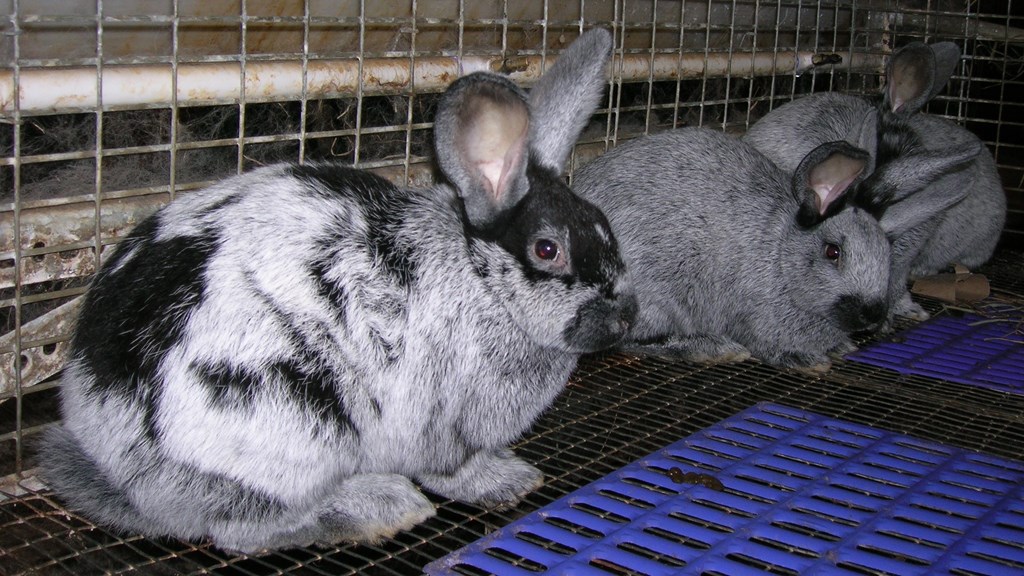
A unique trait of Champagne rabbits is that they change color. Champagne d’Argents are a French heritage breed historically raised for meat and fur. They have calm sweet temperaments, fast growth rates, and are good moms. Champagne kits are born black and gradually turn silver as they grow. They have the same silvering gene as Lipizzaner horses. Silver hairs begin to appear around 4 weeks. By 5-6 months, Champagnes are fully silvered with a darker muzzle.
Scroll down to see their full color transformation.
Let the change begin…
Newborn Champagne d’Argent kits are solid black at birth. Occasionally, you get a “star baby” with a small white star on it’s forehead caused by the silvering gene. Off-colored kits or kits with white hairs on their body are not purebred.
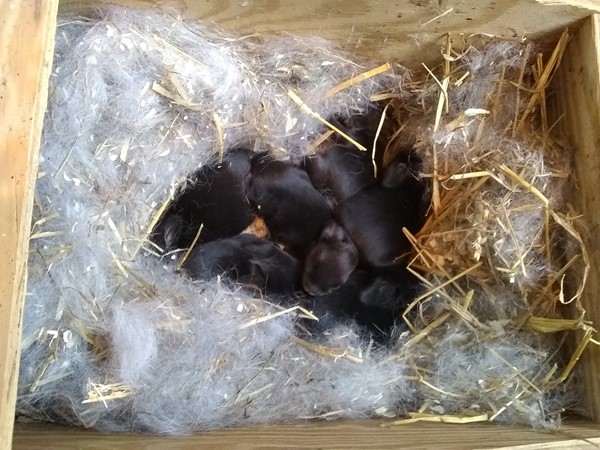
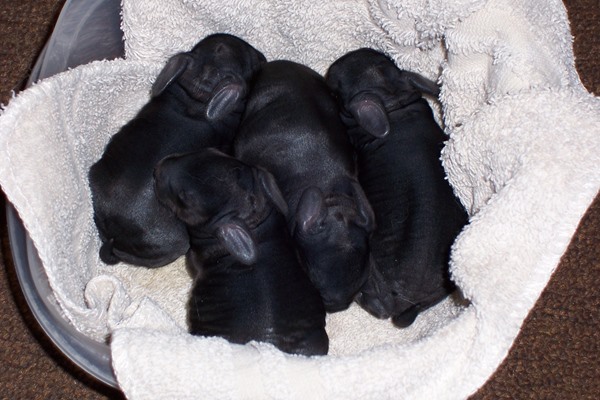
A note about stars: Champagne kits with white stars on their foreheads are perfectly normal. It comes from the silvering gene. Small stars usually disappear when their adult fur comes in. Large stars that are still visible in adulthood are a disqualification from showing. If you breed 2 champagnes with stars, the stars get bigger in the offspring. It’s best to select breeders without stars or pair a starred one with one that doesn’t have a star to keep stars small or non-existent.
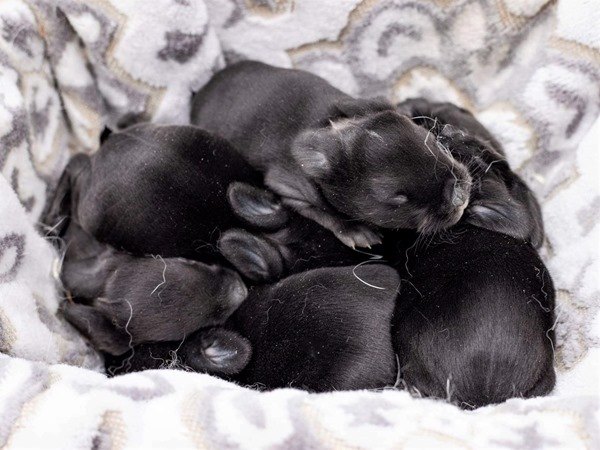
At 2 weeks old, the kits have opened their eyes and are covered with velvety black fur. They begin peeking out of the nest when you approach.

The nest box is removed at 3 weeks. My favorite age! The little bunnies love to munch hay, explore, and pester mom.
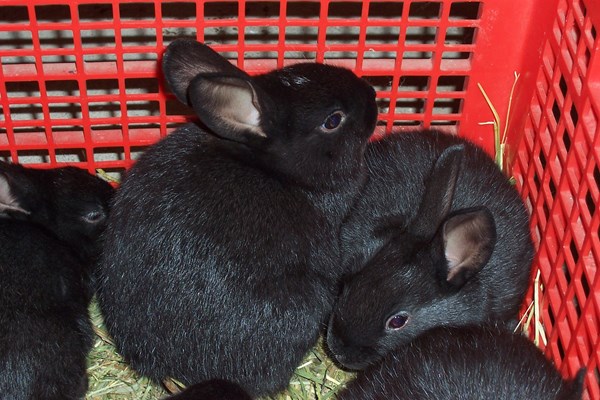
Champagnes begin silvering at 4 weeks old. Silver hairs appear on their noses, eyelashes, and feet first.
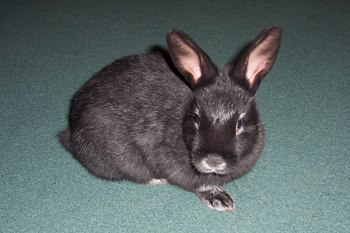


At 6 weeks, the silver hairs spread from the legs to the belly and chest like a wave moving upward.
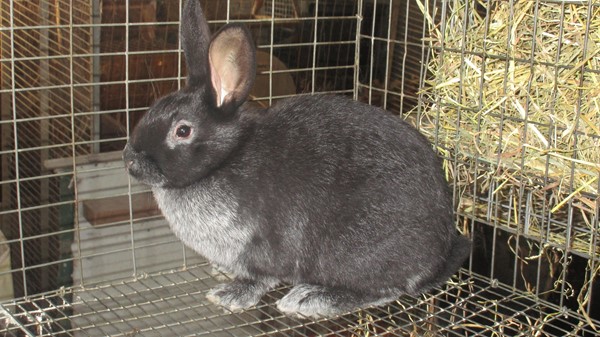
By 8 weeks, Champagne kits begin to show all sorts of fun patterns – each one is unique! They often develop comical markings like batman masks, clown cheeks, polka dots, zig-zags, and more. This color change is one of my favorite characteristics of the breed.

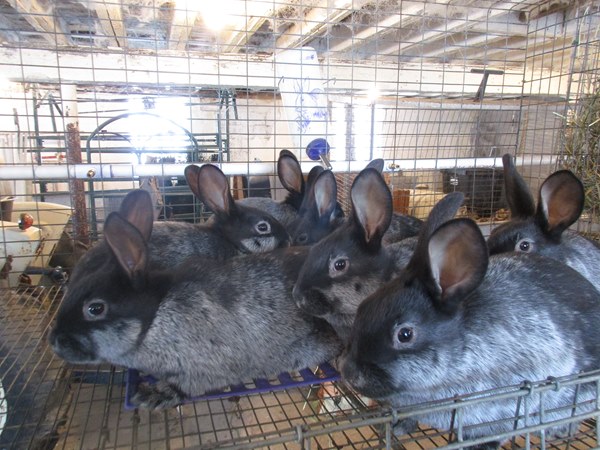
The bodies of 12 week old Champagne rabbits are usually fully silvered but each one sports an adorable black top hat!
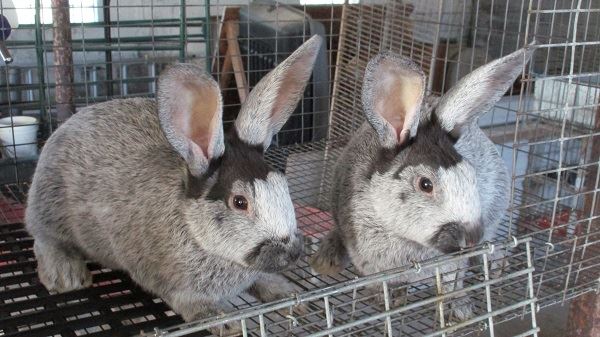
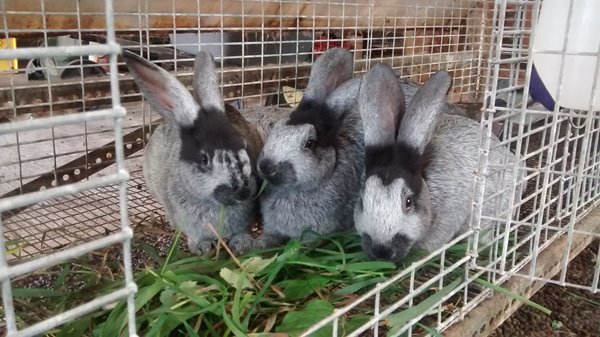
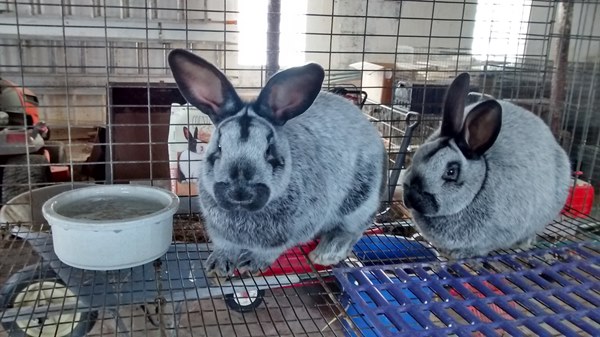
The silvering is usually complete by 5-6 months. Adult Champagnes have a uniform silver colored coat with a dark muzzle. The slate blue undercoat of Champagnes lightens a bit with age but they retain their beautiful silvery color their whole lives.
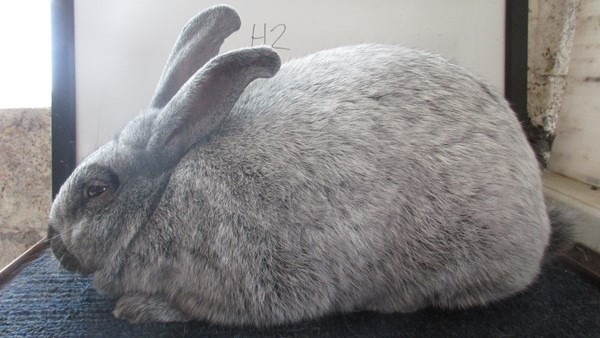
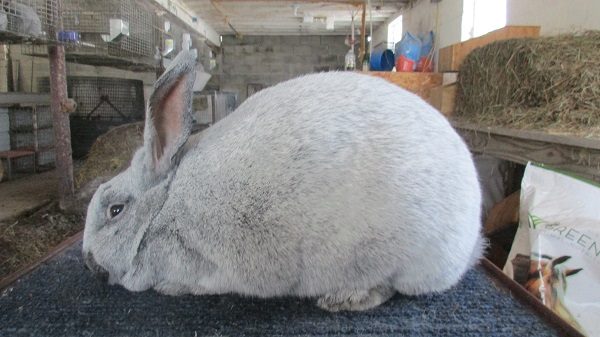
In 1631, Gervase Markham described the color & fur qualities of the ‘French Silver’ rabbit…
“For the richness of the skin, that is accounted the richest which hath the equallest mixture of black and white hair together, yet the black rather shadowing the white; the fur should be thick, deep, smooth, and shining…” –Gervase Markham, France
… the perfect description of the Champagne d’Argent.
Do you raise Champagne d’Argent rabbits? What are your favorite characteristics of the breed? Please share below.

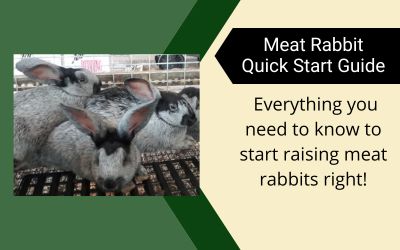



Have 2 8 month olds that lost first litters….Now they absolutely will not lift….Just run around the pen running the bucks to death…Have tried a dozen times and nothing….Boss seeds acv swapped cages….Now I’m running out of patience….I’m not new to raising rabbits had them all my life and I’m an older guy…..
Champagnes are a heritage breed, so they are less likely to breed when daylength is short (late fall-winter). Put lights on for 12-14 hours/day for a week before attempting to breed in the “off season”. If all else fails, you can try the rubber band method in Youtube. There’s more info and tips about breeding rabbits here: https://homesteadrabbits.com/breeding-meat-rabbits/
Thanks for all the information! Could you tell me how long the body of an adult Champagne d’argent is on average? Want to get the correct size hutch before I get the rabbits.
Champagnes are about 14″ long when balled up and 24″ or more when stretched out. Minimum cage size for large breeds (9-12 pounds) is 2’x3’x18″H. Hutches usually have more room because they include an enclosed sheltered area. You can see more cage and hutch ideas in our Quick Start Guide: https://homesteadrabbits.com/raise-meat-rabbits/
Love this breed, but they do not tolerate heat very well. Didn’t think that would be a problem here in Minnesota, guess the humidity is the killer, literally. Do great in very cold temps.
I agree. Champagnes are a dual-purpose meat & fur breed with thick plush pelts. As such, they aren’t recommended for hot humid areas where temps regularly climb above 85F unless you have a climate controlled rabbitry. TAMUK rabbits have been selectively bred for better heat tolerance (thinner fur/larger ears) so they’re a better choice for the South. Champagnes do well in cold temps as long as they are protected from wind and moisture.
Thank you for sharing this info it was very helpful.
Our very first litter had a star. I used it to monitor their growth so I always knew it was the same kit. Loved watching them grow. They are a very mellow breed. Love them.